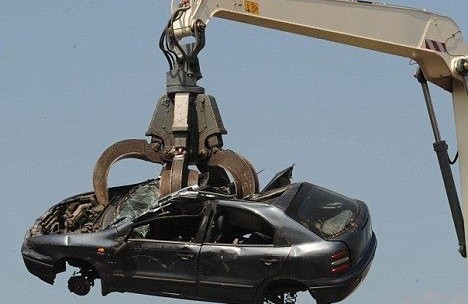-
Binding targets for use of recycled materials in new vehicles
-
Reinforced producer responsibility for collection and treatment of end-of-life vehicles
-
Of 285.6 million motor vehicles on EU roads, 6.5 million reach their end of life every year
On Tuesday, MEPs adopted their proposals on new EU circularity rules to cover the entire vehicle lifecycle, from design to final end-of-life treatment.
The draft measures, backed by 431 MEPs with 145 against and 76 abstentions, aim to boost the automotive sector’s transition to a circular economy by reducing the environmental impact linked to the production and end-of-life treatment of vehicles, and strengthening the sustainability of the car recycling industry in Europe. Specific rules will apply to all vehicles except for special-purpose vehicles, vehicles designed and built for use by the armed forces, civil defence, fire and emergency medical services, and vehicles of historical and special cultural interest.
Improved vehicle design and use of recycled materials
New vehicles should be designed so as to allow the easy removal of as many parts and components as possible by authorised treatment facilities, with a view to their replacement, reuse, recycling, remanufacturing or refurbishing, where technically possible.
MEPs want the plastic used in each new vehicle type to contain a minimum 20% of recycled plastic within six years of the rules’ entry into force. They also want manufacturers to meet a target of at least 25% within 10 years of entry into force, if enough recycled plastic is available at non-excessive prices. They also want the Commission to introduce targets for recycled steel and aluminium and its alloys, following a feasibility study.
Stricter rules for end-of-life management and export of used vehicles
Three years after the entry into force of the new rules, manufacturers would have extended producer responsibility, i.e., they would have to cover the cost of the collection and treatment of vehicles that have reached their end-of-life stage. MEPs want a better distinction between used vehicles and end-of-life vehicles, with an export ban for those that are considered end-of-life vehicles.
Quote
Co-rapporteurs Jens Gieseke (EPP, DE), of the Environment committee, and Paulius Saudargas (EPP, LT), of the Internal Market committee, said: "Parliament supports the circular economy in the automotive sector. We are advancing resource security, protecting the environment, and ensuring sustainability. To avoid overburdening the industry, we secured realistic targets, and ensured less red tape and fair competition."
Next steps
As Council already adopted its position earlier this summer, interinstitutional negotiations are expected to start without delay.
Background
On 13 July 2023, the Commission proposed a new regulation on circularity requirements for vehicle design and improved management of end-of-life vehicles, in line with the objectives of the European Green Deal and the circular economy action plan.
In 2023, 14.8 million motor vehicles were manufactured in the EU, while 12.4 million vehicles were registered. There are 285.6 million motor vehicles on EU roads and every year around 6.5 million vehicles come to the end of their lives.






